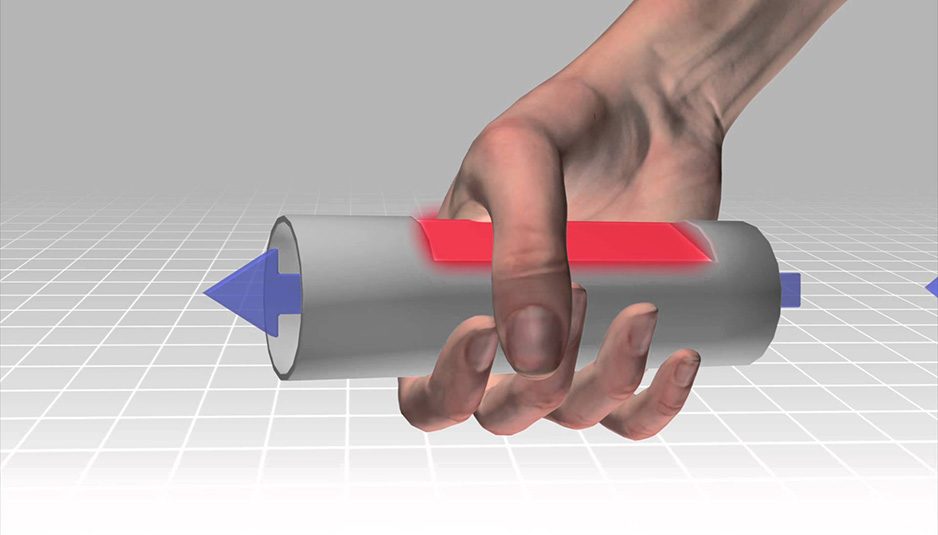Lighting up thanks to the Body-Heat: the Peltier Tiles

youtube.com
Ann Makosinski is the young inventor of a prize-winning body-heat powered flashlight. The 17-year-old from Victoria (Canada) showed off the new device at the Ontario Science Centre in Toronto last year, where she received the 2014 Weston Youth Innovation Award. She also won a prize at the Google Science Fair in 2013. She hopes her inventions will help people in the developing world, such as a friend in the Philippines who first inspired her: “she told me how she had failed her grade in school because didn’t have any electricity, no light to study with at night“.
The flashlight is powered by devices called Peltier tiles. A Peltier tile consists of two ceramic tiles placed on top of each other. In between, pieces of conductor are arranged so that when one ceramic tile is hotter than the other, the thermopower of the pieces of conductor are all add together to maximize the amount of energy produced. The thermopower effect was discovered in 1821; however, electrons were not discovered until the late 19th century, and the effect was not fully understood until the half 20th century. The tiles produce a small amount of electricity when are heated on one side by the palm of your hand and cooled on the other by air passing through an aluminum tube. Electric current flows when electrons move in one direction through a conductor. When a conductor is hot, the electrons tend to spread out. When a conductor is cool, the electrons tend to move closer together, or condense. So if one end of the conductor is hot, and the other end is cool, the electrons will move away from the hot end and toward the cool end, producing a current. Your hand will be warmer than the surrounding air on all but the hottest days, there is, therefore, heat flow between the two layers.
The heat flow from your hand to the air does not provide so much power. So, Makosinski used a transformer to boost the voltage and very efficient LED lights to make the most of what power she could wring out of the Peltier tiles. The amount of electricity you can produce by harnessing the flow of heat from your body to the air around you may not be very large, but it could be enough to charge iPods, cell phones, and various types of wearable computers that are currently being developed.
explorecuriocity.org
Makosinski said, “the devices could be very useful in developing and poor countries; and would also be handy for emergency kits and for camping, since they don’t require batteries”. Actually, she has now come up with a hands-free version — a body-heat powered headlamp, since the head radiates a lot of heat. The current prototype features heat sinks that fan out on either side of the device and an LED bulb that sits atop a long stalk like a lollipop. It has a solar panel for additional charging, and a capacitor that allows it to store power without a battery. Normally, both the devices work better when it’s cold and there is a bigger temperature difference between the wearer’s head or hands and the air, though Makosinski says the difference can be as small as two or three degrees. Some manufacturers have expressed interest in making the device but they are waiting until the flashlight’s brightness is competitive with those on the market.
